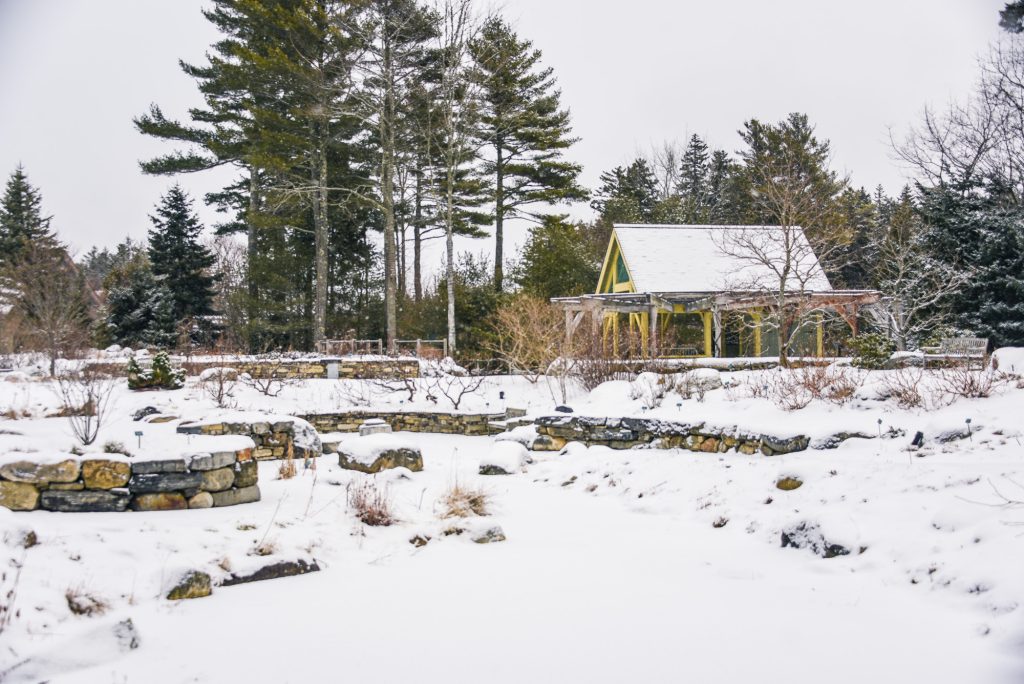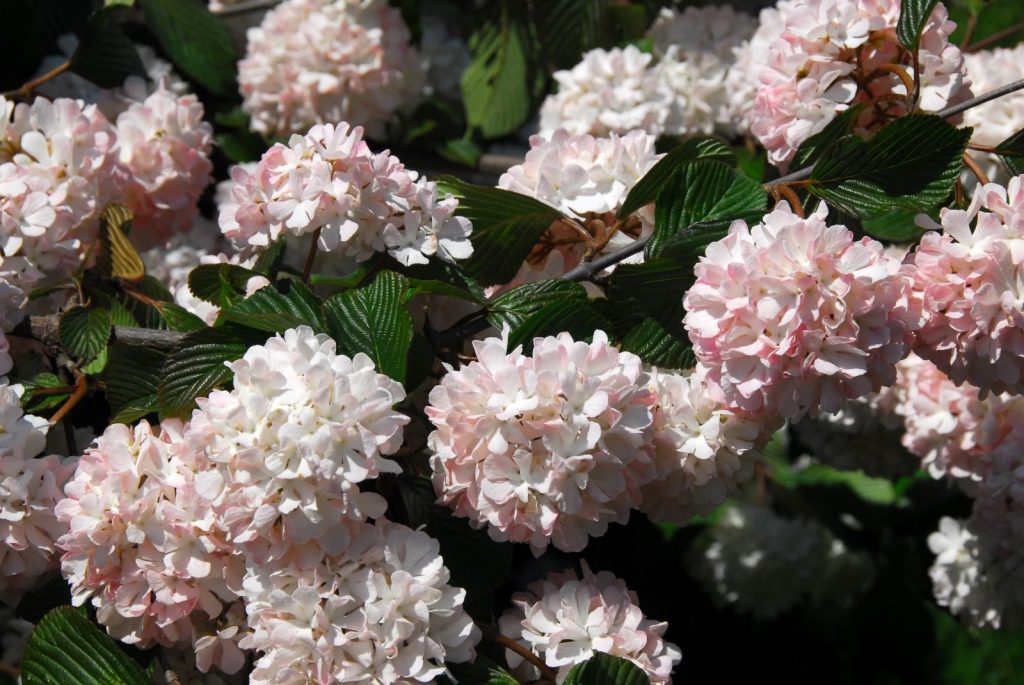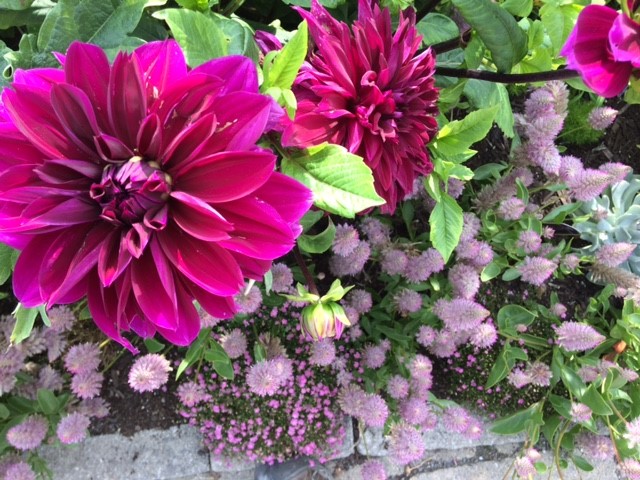Call me crazy, but pruning gives me an enormous feeling of joy. Considering the shape and form (i.e. structure) of a tree or shrub and working out how to increase its health, create strong limb structure, and enhance its natural beauty is akin to solving a puzzle. It is also a lovely way to coalesce with the beauty and brightness of sunny winter days in Maine.
Winter Pruning–this is your window.
Winter is an excellent time to prune deciduous woody plants for many reasons. First, one can clearly see the structure of the specimen so it is easy to determine your plan. The freezing temperatures reduce sap loss from the cuts and preclude infection from insects or diseases, while giving the tree time to heal.
The best tools for pruning are hand secateurs for small branches (up to ¾” thickness); loppers for branches up to 2.5” thick; and a handheld pruning saw for branches up to 6” thick. Tools must be sharp and clean for best results. Always sterilize tools with alcohol or bleach between specimens and between cuts of diseased wood to prevent the spread of disease.
Proper cutting technique is essential for the health tree as it allows the cut area to heal properly, protecting the tree from water, frost, disease, and insect damage.
Finding the cutting zone:
- Locate the branch bark ridge (BBR) and the branch collar (BC).
- The BBR is where the tissue of the branch and the tissue of the trunk (or two branches) intersect, and it expands from the top point of intersection downward along the trunk and parallel to the branch.
- The BC is a thickened or raised area of tissue under and around the branch where it intersects with the trunk (or another branch).
- A correct cut starts on the branch close to, but just outside of, the BBR and angles downward away from the trunk just beyond the BC. With a correct cut, the BBR and the BC are never cut into or damaged. Avoid flush cuts which are made too close to the trunk and into the BC.
Smaller branches can be cut in one stroke using secateurs or loppers. When removing larger branches with saws, use the 3-cut method to avoid injuring the tree.
- Make a first shallow cut on the underside of the branch several inches above the BC. This cut protects the bark from being torn below the final cut.
- Sever the branch completely just above and just beyond the first cut to remove the weight of the branch and minimize tearing.
- The final cut will be made in a downward motion starting close to and just outside of the BBR and will stay just outside of the edge of the BC.
Many deciduous trees and shrubs benefit from pruning that results in an open single leader (trees) or an open vase-shaped specimen (shrubs). This method increases ventilation and light penetration and can result in a stronger structure and a healthy, vigorous plant.
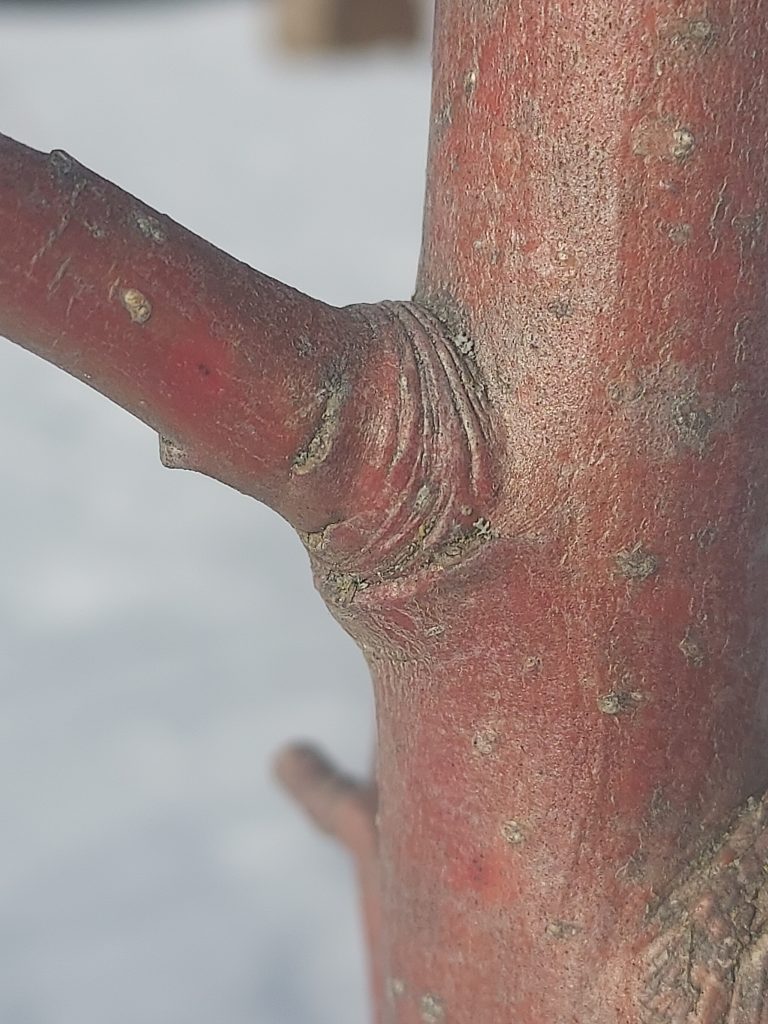
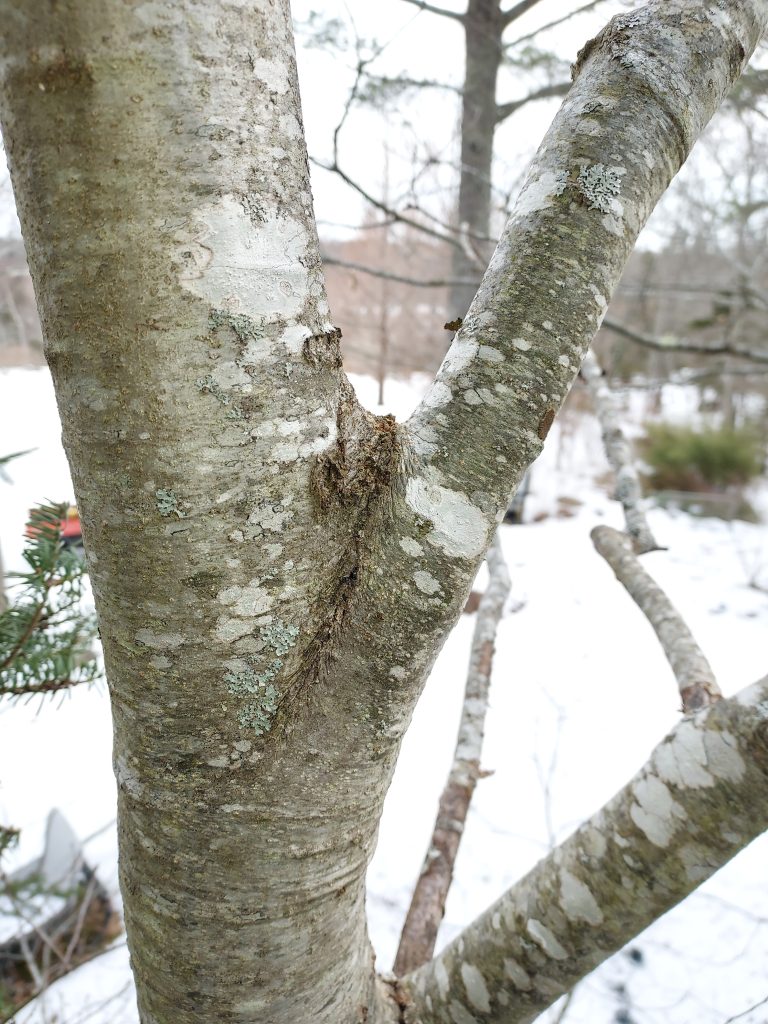
Above, examples of BC and BBR
Deciding on what to remove: The goal is to create a uniform, balanced tree or shrub that has evenly spaced branching and adequate space in the center and between branches for ventilation and light penetration.
- Remove less than 25% of entire growth per year. If more needs to be pruned, complete the job over several successive years.
- Always begin by removing broken, diseased, deformed, and dead branches and suckers growing at the base of the trunk; branches that rub against one another; and branches that cross from one side of the plant through the center to the opposite side.
- If a single leader pyramidal tree has codominant stems, remove all but one. Shrubs and trees with open, vase-shaped crowns may have several stems.
- From trees, remove branches that have narrow, v-shaped crotches (that have an angle less than 45⁰ from the point of attachment). Narrow crotches, especially in large trees, cause buildup of weak, included bark that can break later from weight, ice, or snow pressure.
- Thin tightly clustered branches and stems. Keep the ones that have the greatest angle from the trunk and that will grow to result in an overall even, balanced structure.
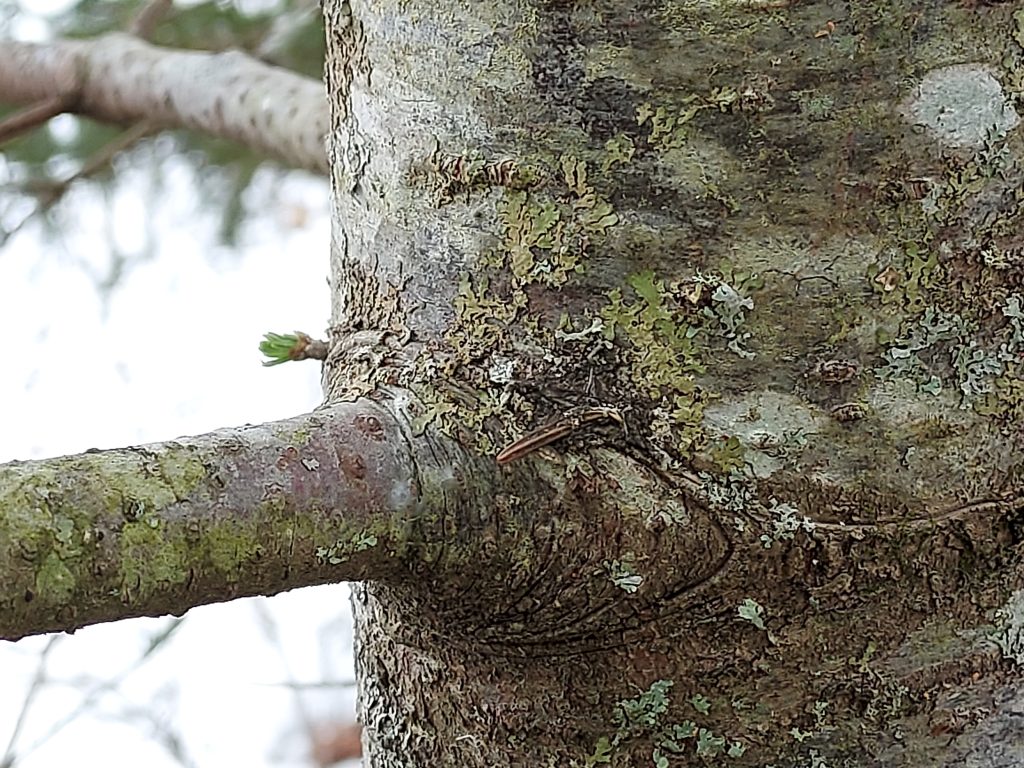
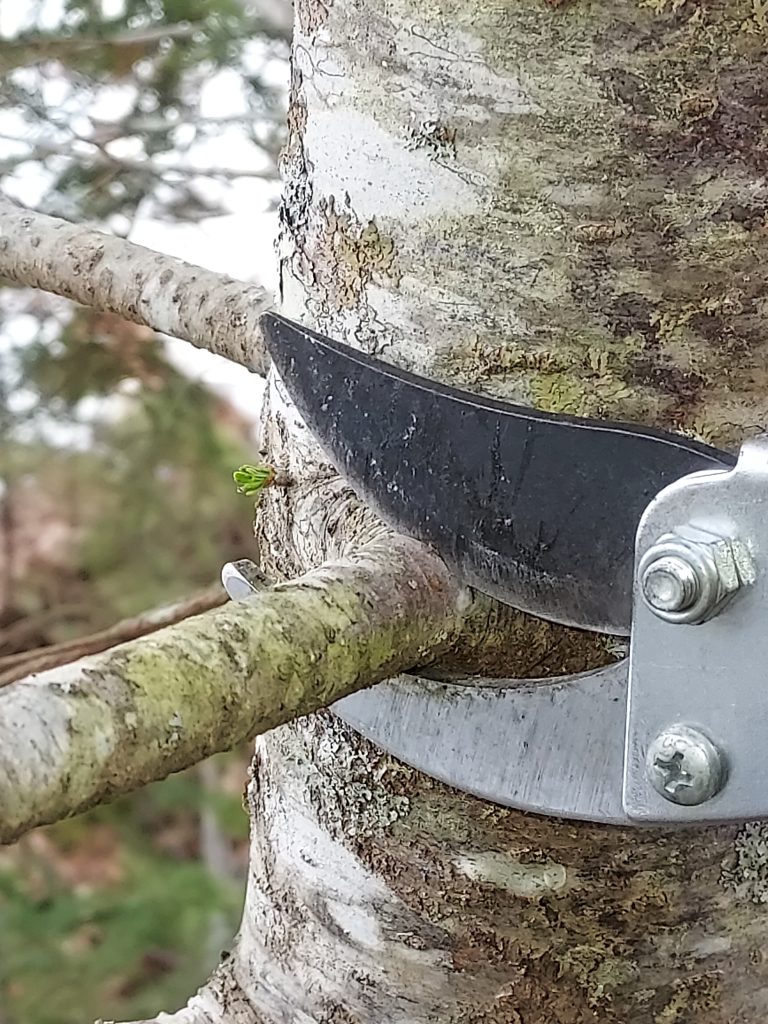
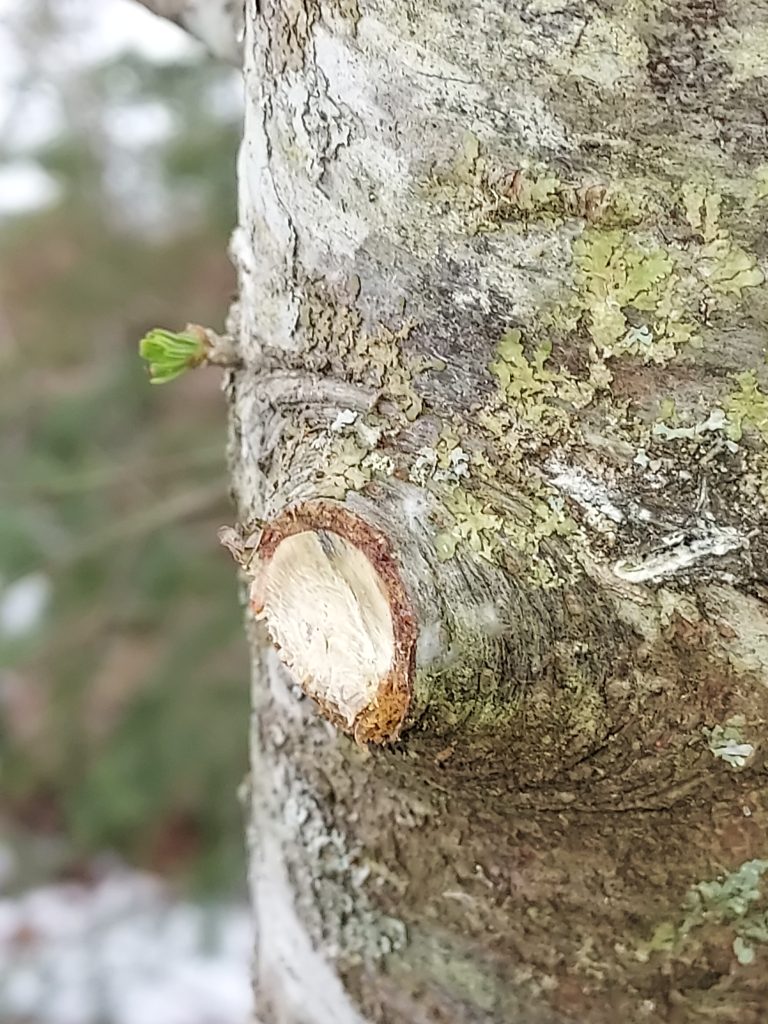
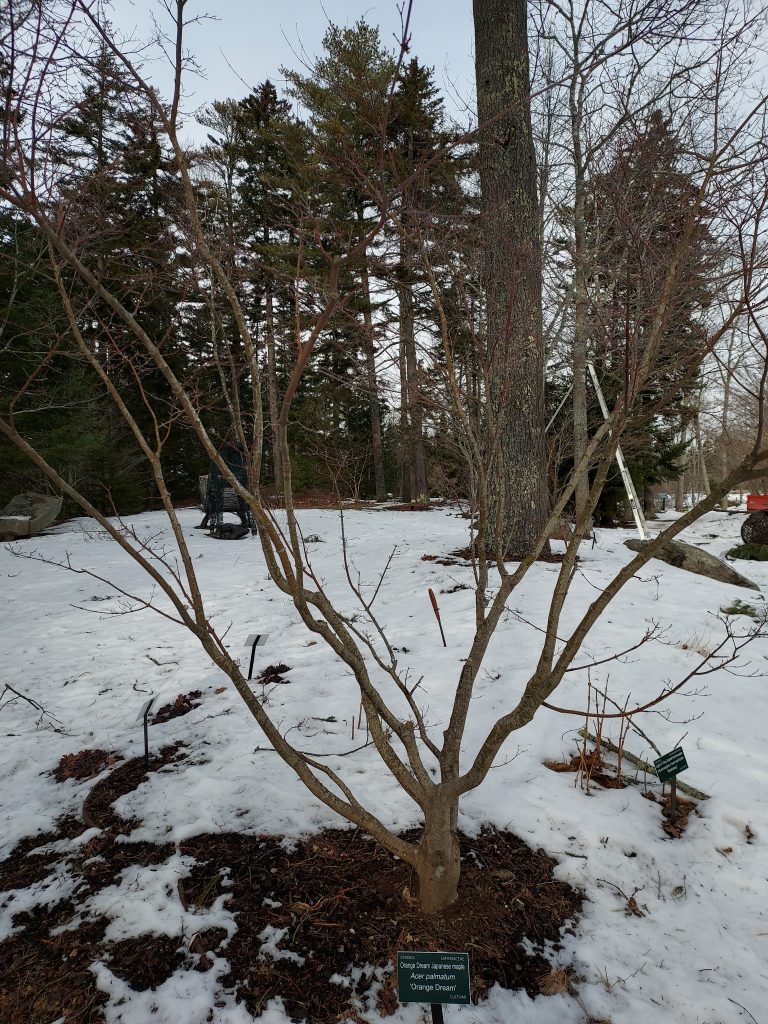
Above, removing a dead branch correctly and example of an open vase-shaped small tree.
This covers the most basic elements of pruning. With this information, I hope you feel confident to tackle some small tree or shrub pruning and learn how enjoyable it can be. In the beginning, go slowly and deliberately: study your plant in order to identify the BBR, BC, and the best place for each cut. Keep your tools sharpened and clean. Study the branches to recognize broken, diseased, rubbing, and congested branches. Work toward symmetry and balance. Work slowly and cut minimally. Appreciate the winter sun on your back as you work. As you gain experience, the process will become easy and enjoyable. I hope you find it as gratifying as I do.
